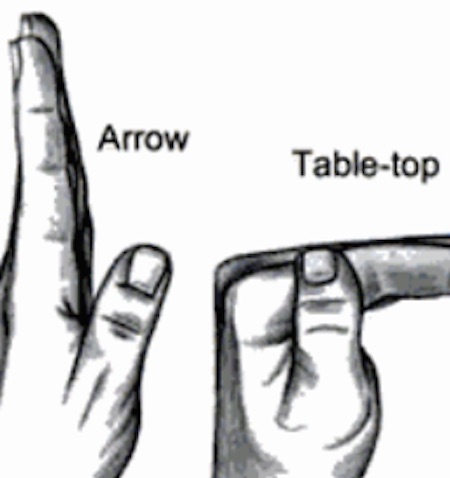Emergency Treatment FAQ
These are some questions we are frequently asked regarding hand and wrist injuries that need urgent care.
Q. Are Hand and Upper Limb Fractures Common?
A. Fractures of the upper limb represent a majority of fractures that are care for in Emergency Rooms and Departments.
Q. What should I do If I've been seen in a local emergency room for a hand, wrist, forearm or upper extremity fracture or injury?
A. It is important to follow the ER or ED instructions for post injury care. In addition you should arrange for appropriate follow up care with a qualified physician. 6 important TIPS for delayed and urgent care of Hand and Wrist Fractures that have been seen in a local ER in Western Massachusetts and Northern Connecticut
6 important TIPS for delayed and urgent care of HAND AND WRIST FRACTURES that have been seen in a local ER ...in Western Massachusetts and Northern Connecticut
- Contact your PCP. They can provide interim care or redirect you.
- Call us. We like to accommodate potential patients
- Call the ER back. Often they can advise you over the phone if you've been seen recently
- Return to the ER where you were seen. Most ER's will be glad to see you again
- Call on your own. There is nothing wrong with seeking care on your own
- Don't panic. Many hand and wrist injuries once stabilized in a local ER can be seen safely and effectively at a later date.
Most Hospital Emergency Departments or ER’s will have given you a follow-up for a physician that they regularly work with. There are some times that they don't have a hand surgeon on call or on staff. In those cases, you should seek out a hand surgery group in the area. While there may not be an immediate appointment available, records from your ER visit can be obtained, and in many cases, an appointment can be given within the proper time frame. It is important to remember that while the ER may stress being seen immediately, that many hand and wrist conditions can be take care of urgently but not emergently once proper ER Emergent Care has been given. However, there are conditions that may warrant being seen right away and at times you may be advised to go back to the orginial ER if you can't be seen in an adequate time frame. For example, a tendon Laceration where the tendon is cut but the skin has be sutured can be seen at a later date, soon after, but does not necessarily need surgery at the same, or even the next, day. Every situation is different and this information is not to be construed as ultimate medical advice for the purpose of treatment.
HEAT Vs COLD for HAND AND ORTHOPEDIC ISSUES
APPLYING HEAT AND COLD
Applying heat or cold for fingers, hands, wrists and the upper extremities is a common method for treating injury, stiffness, and pain.
HEAT
WARMING UP
WHY HEAT?
Heat or warmth will help get things moving.
WHEN TO USE?
• Prior to an activity.
• Stiff joint and muscles
HOW?
Take a warm shower or bath . Use a hot pack, water bottle or warm compress
CAUTION
• Too much heat can cause burns to skin and tissues.
• Too much heat can cause swelling to occur.
• Avoid prolonged warm bathing in a hot tub (unless supervised.) Too great a temperature increase can cause blood pressure to fall and lead to fainting.
COLD
COOLING DOWN
WHY COLD?
Cold or coolness after an activity when there is pain, swelling and irritation.
WHEN TO USE?
• To relieve pain and irritation from activity.
• To reduce swelling.
HOW?
Ice after an activity Apply ice or cold pack for 15 minutes on then allow a 15-minute off.
CAUTION
• Too much COLD can slow down and stiffen sore joints
• Applying ice or anything ice cold to bare skin can cause injury if left on too long.
• Any extreme pain or numbness should cause one to stop icing.
• Always wrap the source of cold in fabric or a towel.
If a cast bandage or splint is too thick and the cold is not getting through then apply the cold close to or near the area on exposed skin.
• Too much exposure to ice water can lead to frostbite or hypothermia and injury. Never bathe in an ice bath without supervision.
SPECIAL SITUATIONS
RECENT INJURY
Within the first several days of a bruise, fracture or injury (as long as circulation is normal) ICE can help with pain relief and to reduce swelling.
CHRONIC INJURY AND TIGHTNESS
After an acute injury period HEAT can be used to mobilize tight tissues and get blood flow to an area to allow the body to speed healing.
SPECIAL TREATMNTS
THERAPEUTIC ULTRASOUND
A qualified therapist will use ultrasound to slowly heat deeper tissues to aid with motion
CONTRAST BATH
Alternating heat and cold can be used under supervision
PARAFIN or WARM WAX is to be used to apply heat only via machines that are highly regulated and use a wax mixture that avoids skin burns
THINGS TO ALWAYS REMEMBER
• Never use heat or cold on a limb or finger with impaired circulation or feeling.
• Whether you are warming up or cooling down, too much can be harmful.
• Be careful about gel packs from the microwave, or hot water bottles, test the warm item first before applying to the affected areas.
•Monitor time, skin condition and if there are any questions always ask your medical provider.


 copy.jpg)
